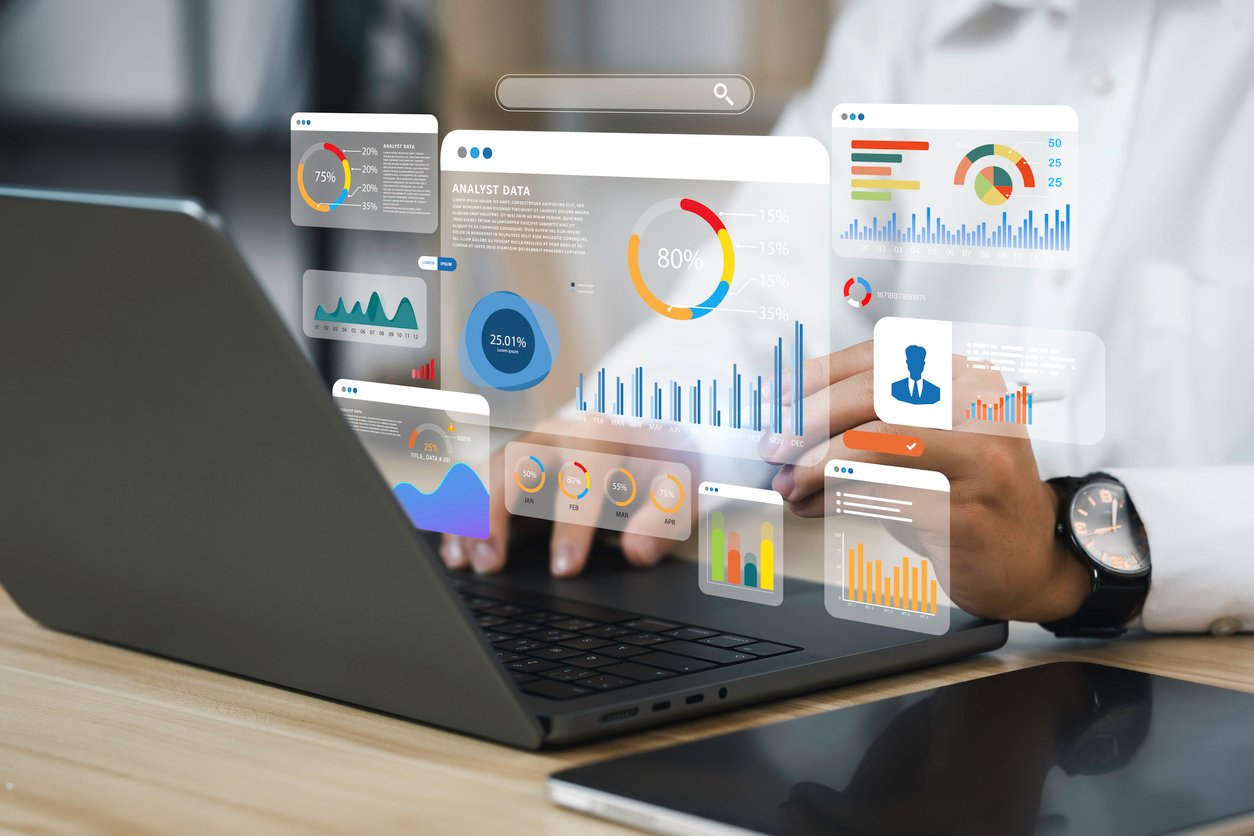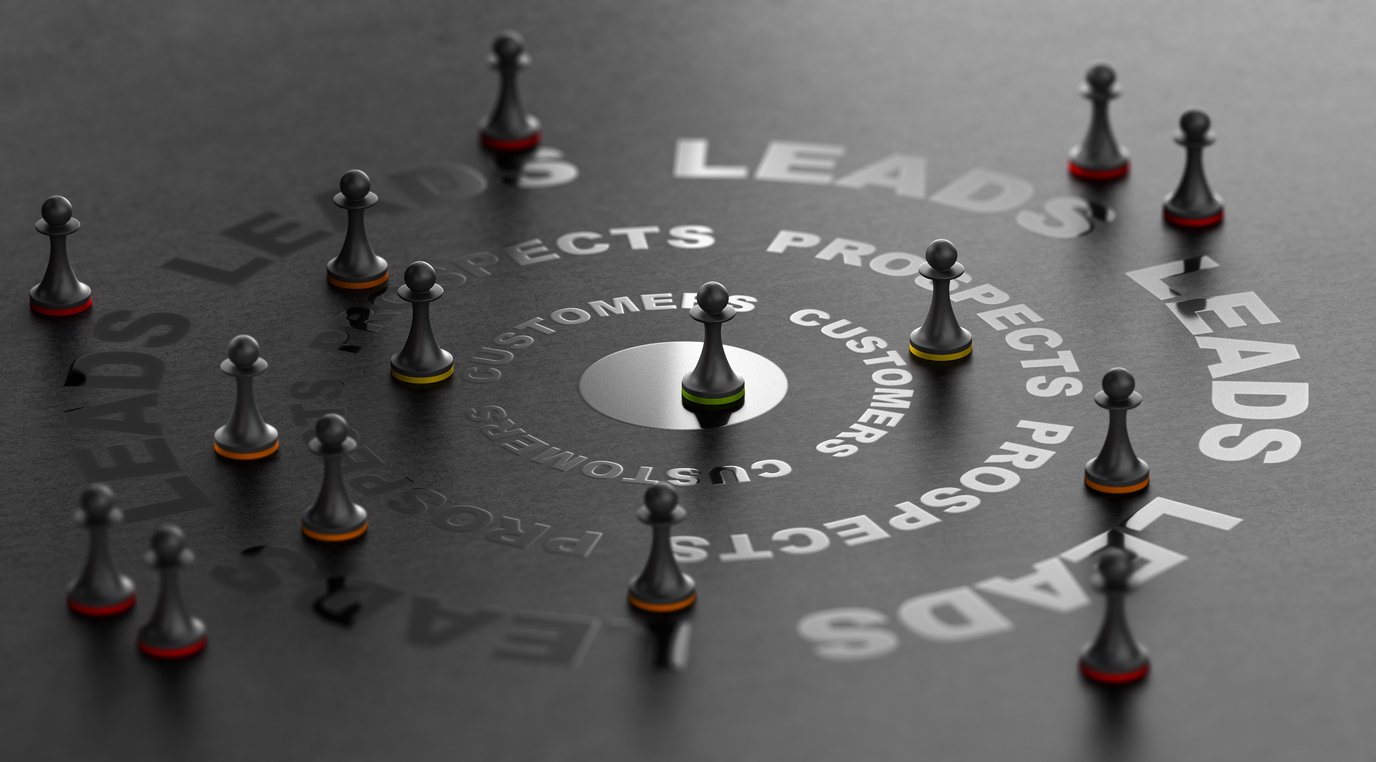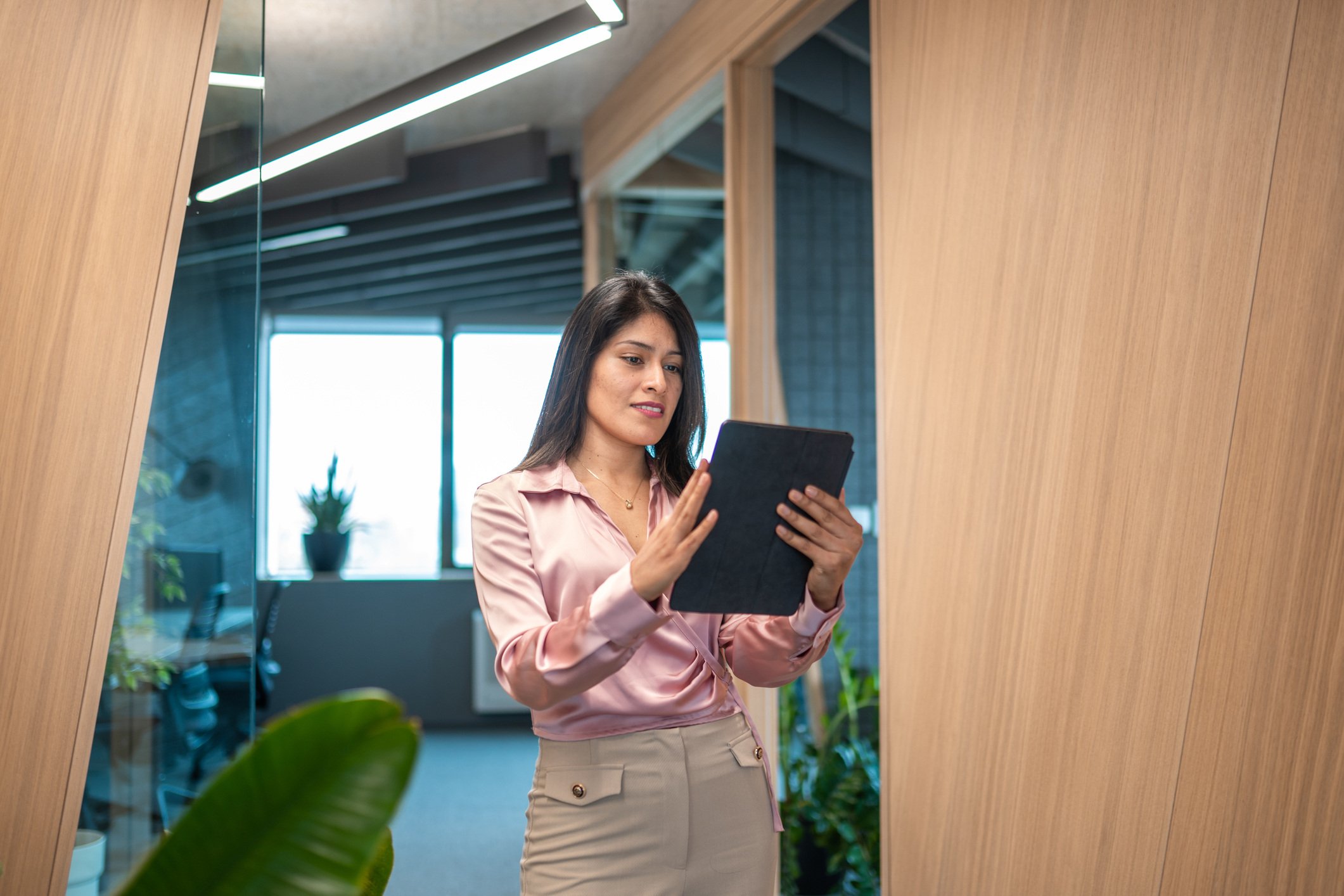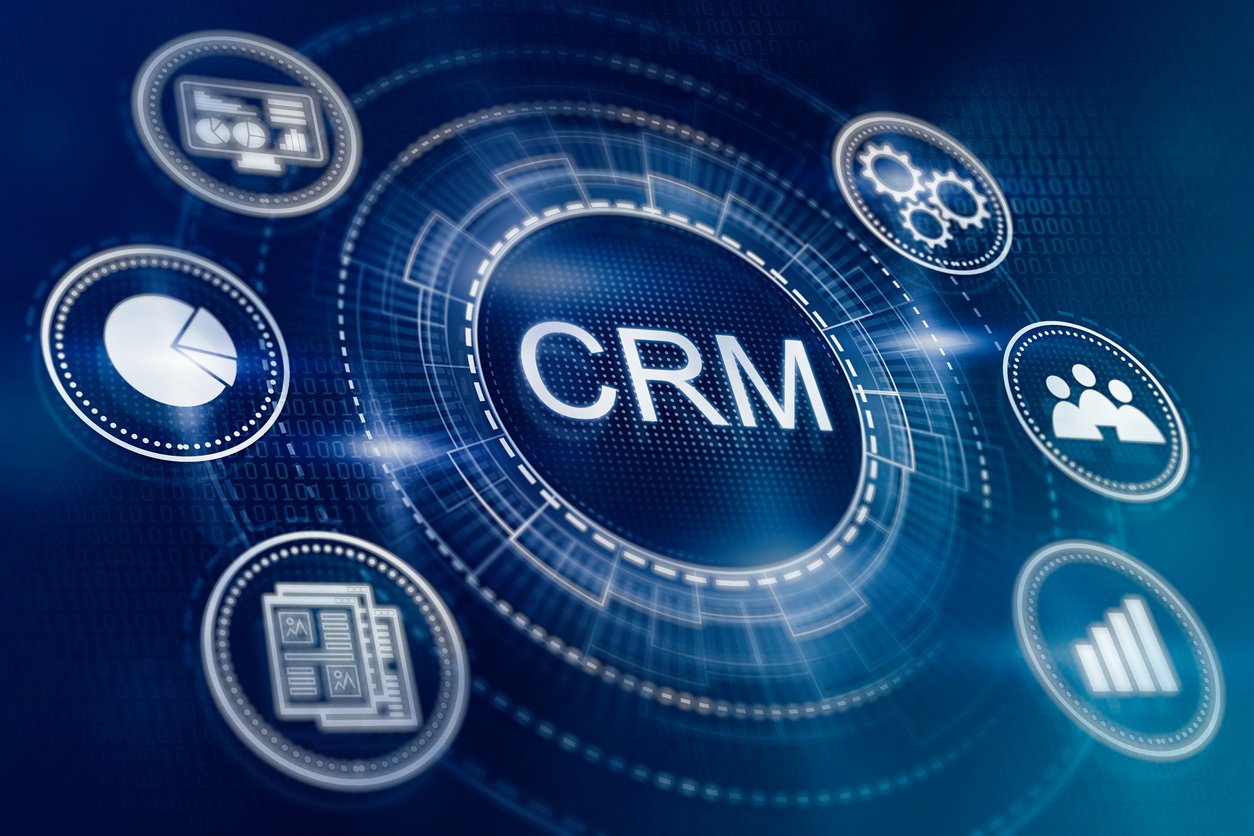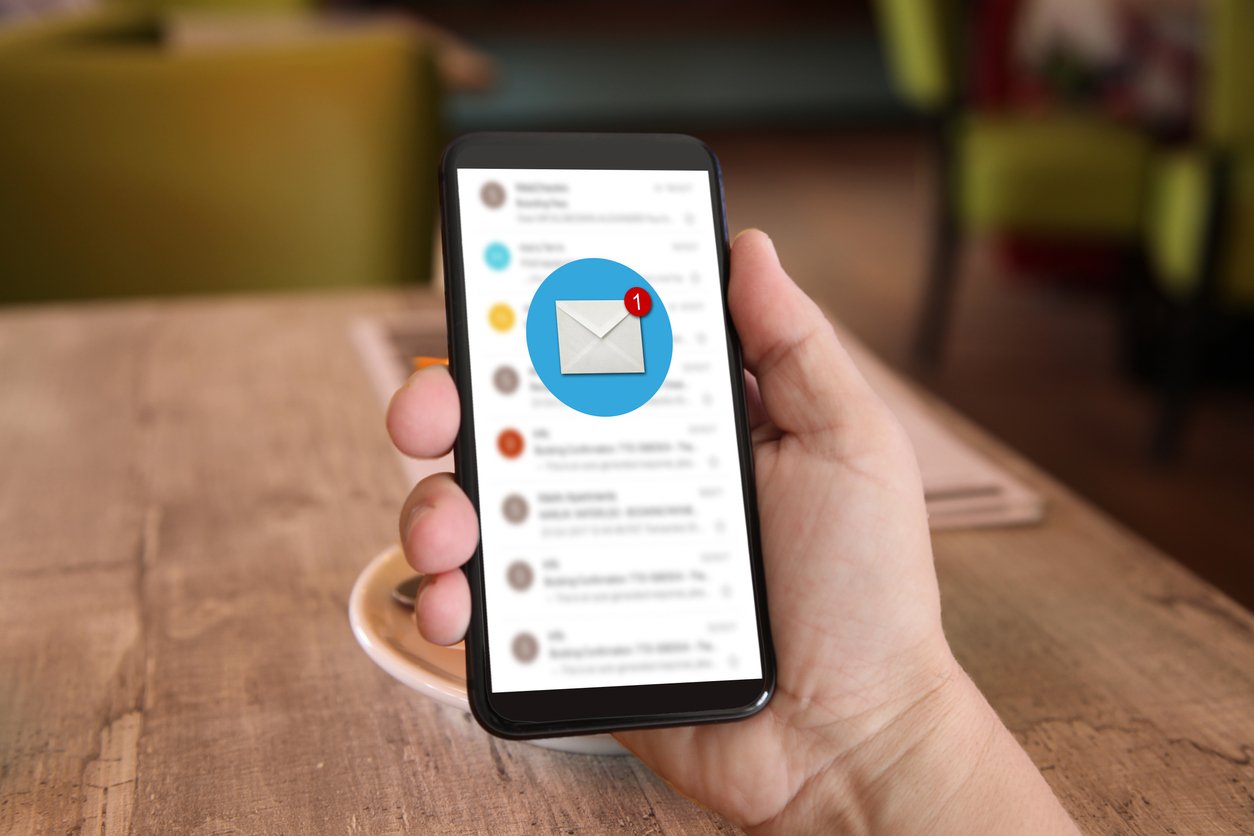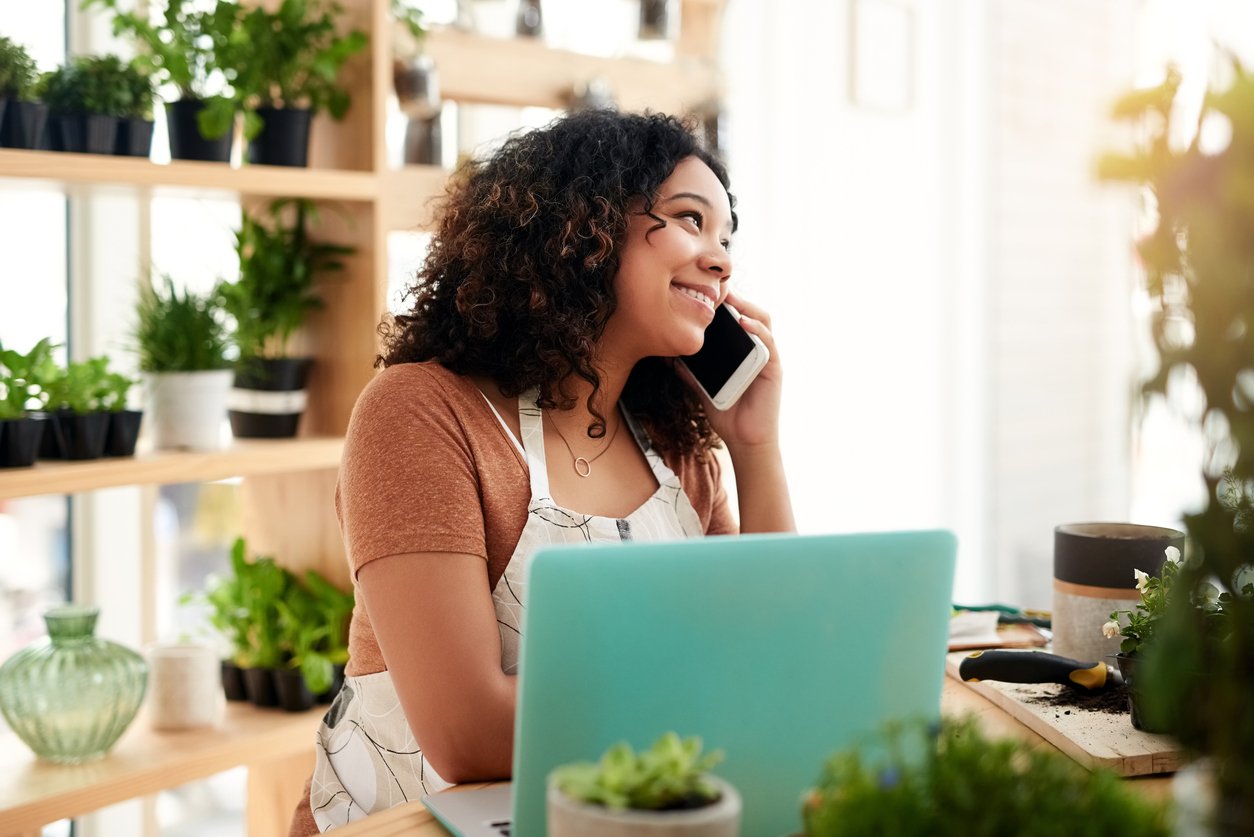
5 Ways a Predictive Dialer Can Increase Sales Efficiency
 Updated on
Updated on
 By Robins Dorvil
By Robins Dorvil
Robins Dorvil
With over 7 years of experience in the insurance industry, 4+ years as an Account Executive at Ringy CRM, and 17 years as a Creative Real Estate Inves...
learn more
Robins Dorvil
With over 7 years of experience in the insurance industry, 4+ years as an Account Executive at Ringy CRM, and 17 years as a Creative Real Estate Inves...
Table of Contents
Table of Contents
You've run into a roadblock, haven't you?
Your call agents are pushing themselves to the limit, and you've hired as many of them as you can, but you still feel there is more that can be accomplished.
You're right. And predictive dialers are how you might get there.
Failing to adopt them into your sales process will mean that your call agents will get bogged down in menial tasks while your competition is chasing after your prospects, looking something like this:
But not to worry. If you're looking to take the first step on the journey toward the adoption of predictive dialers, you've come to the right place.
In this article, you'll learn:
- What is a Predictive Dialer?
- How Does a Predictive Dialer Work?
- 4 Types of Predictive Dialers
- Pros and Cons of a Predictive Dialer
- Why a Progressive Dialer is Better
- 5 Ways Predictive Dialers Can Increase Sales Efficiency and Productivity
- What to Look for in a Predictive Dialer?
- Top 3 Predictive Dialer Software
What is a Predictive Dialer?
A predictive dialer is a software system that selects phone numbers and dials them for a call center agent, lowering the amount of time an agent spends dialing each day and increasing the amount of time they spend on calls with customers, closing deals.
A predictive dialer uses a pacing algorithm that predicts how long it takes an agent to answer a call and modifies the dialing rate accordingly.
Call centers found that their call agents not only wasted time trying to reach numbers that were busy, disconnected, or went straight to voicemail, but that they also lost momentum in their work, lowering their effectiveness once they got onto a call as a result.
Predictive dialer spares call agents the need to deal with busy lines, disconnected calls, and other phone-related issues. The call agent's only job is to close deals, and the algorithm ensures they go from one call to the next with as little delay as possible.
Predictive dialers screen out busy signals, voicemail, disconnected numbers, and so on. Once it detects an answered phone call, it immediately passes it over to a call agent.
But because phone numbers may be unavailable for one reason or another, predictive dialers also have the option of dialing a lot of phone numbers at once to raise the level of productivity.
And because a predictive dialer is an automated system, it ensures the workload distribution within a team is completely equal. Everyone gets the same amount of opportunities, and it's up to them to make the most of what they have.
How Does a Predictive Dialer Work?
A predictive dialer automates and optimizes outbound calling by intelligently dialing numbers based on agent availability and historical call data. Below is a detailed step-by-step breakdown of how a predictive dialer system works:
Step 1: Input Contact List
The process begins by uploading a contact list into the predictive dialer software. This list may be tailored to a specific campaign, sales push, or customer service outreach.
- The predictive dialer solution is integrated with a CRM or contact database.
- It organizes and prepares the list for automated dialing.
Step 2: Analyze Agent Call Patterns
The predictive dialer algorithm begins analyzing the behavior and average handling time of each agent in the call center predictive dialer environment.
- It looks at factors like call duration, answer rates, and wrap-up time.
- This helps estimate when each agent will be available for the next call.
Step 3: Predictive Dialing Initiated
Based on the analysis, the predictive auto dialer starts dialing multiple numbers before agents are actually free—timed precisely so that when an agent finishes a call, a live person is waiting on the line.
- This proactive strategy minimizes agent downtime.
- The dialer predictive technology ensures that only answered calls are routed to agents.
Step 4: Call Routing and Handling
As soon as someone answers, the predictive phone dialer instantly connects the call to an available agent.
- Calls that go unanswered, hit voicemail, or result in busy signals are automatically filtered out.
- This ensures that the agent's time is spent only on live conversations.
Step 5: Real-Time Data Collection
While running, the predictive outbound dialer captures real-time metrics and data.
- This includes call duration, response rates, and conversion outcomes.
- Data helps evaluate predictive dialer performance, campaign success, and individual agent effectiveness.
Step 6: Performance Monitoring and Optimization
Sales managers can monitor results using the predictive dialer technology dashboard.
- It highlights top-performing agents and those who need improvement.
- Since each predictive dialer call center agent receives an equal flow of leads, performance metrics are more transparent and comparable.
Step 7: Campaign Completion and Review
The predictive dialer system continues down the contact list until the campaign is complete.
- All call outcomes are logged for review.
- The business can then adjust strategies based on what the predictive dialer services reveal.
4 Types of Predictive Dialers

Here are four types of predictive dialers that your company can use:
|
Types of Dialers |
Details |
|
Outbound Predictive Dialer |
Automates outbound calls based on agent availability. |
|
Call Center Predictive Dialer |
Streamlines high-volume calling in call centers. |
|
Virtual Predictive Dialer |
Cloud-based, remote-compatible dialer. |
|
Predictive Auto Dialer |
Uses behavior data to auto-dial and schedule. |
1. Outbound Predictive Dialer
An outbound predictive dialer automatically dials from a list of external contacts, typically used in sales, telemarketing, or customer outreach. It leverages a predictive dialer algorithm to anticipate agent availability and dial multiple numbers in advance to ensure constant engagement.
Uses and Benefits:
- Drastically reduces agent idle time.
- Boosts daily call volume without sacrificing call quality.
- Filters out voicemails, busy signals, and disconnected numbers.
Ideal Industries:
- Sales and lead generation
- Market research firms
- Political campaigning
- Debt collection agencies
2. Call Center Predictive Dialer
A call center predictive dialer is a more robust system designed for high-volume environments. It replaces manual dialing methods or preview dialers, optimizing how calls are distributed among agents.
Efficiency & Productivity Gains:
- Productivity boost in call centers using predictive dialers.
- Delivers consistent call flow so agents can focus on selling, not dialing.
- Identifies top and underperforming agents based on uniform lead distribution.
Ringy's calling solution for call centers integrates lead scoring, call tracking, and smart CRM features—all of which enhance call center operations and drive better conversion rates.
3. Virtual Predictive Dialer
Unlike traditional on-premise systems, a virtual predictive dialer resides on remote servers and is accessed via the internet. This eliminates the need for significant upfront hardware investments and ongoing maintenance.
The benefits of virtual/cloud-based solutions include:
- Lower Upfront Costs: No need for expensive hardware and installation.
- Scalability and Flexibility: Easily adjust agent capacity as needed.
- Remote Work Compatibility: Agents can access the predictive dialer service from anywhere with an internet connection, facilitating remote work arrangements.
- Easy Integration: Virtual predictive dialers often integrate seamlessly with other cloud-based business applications.
4. Predictive Auto Dialer
A predictive auto dialer is an advanced version of a predictive dialer that automatically determines not only when to dial, but whom to dial based on historical data, lead scoring, and contact segmentation.
Unique Features:
- Advanced lead prioritization using behavioral data.
- Compliance settings for TCPA and DNC regulations.
- Auto-scheduling of follow-up calls based on call outcomes.
Regulatory Considerations:
- Must comply with consumer protection laws, such as the Telephone Consumer Protection Act (TCPA) in the U.S.
- Should have built-in features like call recording consent, opt-out management, and contact time zone filters.
Pros and Cons of a Predictive Dialer
A predictive dialer system can significantly improve outbound calling performance, but like any technology, it has both advantages and disadvantages. Below is a balanced view to help you determine whether a predictive dialer solution fits your organization's needs.
Pros of Predictive Dialer
- Increased Efficiency and Productivity: A predictive dialer eliminates manual dialing and idle time. Agents can spend more time talking with leads. This results in significantly higher call volumes and faster campaign execution.
- Better Lead Management and Follow-Up: Integrated predictive dialer software ensures leads are tracked, scored, and followed up automatically. Platforms like Ringy CRM help maintain a complete history of interactions. This improves conversion rates and customer engagement.
- Enhanced Sales Conversion Rates: By keeping agents on live calls with real leads, predictive dialer solutions increase conversion opportunities. Some businesses report up to 300% better conversion compared to manual dialing. It's an ideal tool for outbound sales teams.
- Cost and Time Savings: With less time spent on unanswered calls, agents handle more leads per hour. Predictive dialer systems can reduce labor costs by up to 11%. They also shorten sales cycles, making teams more agile.
Cons of Predictive Dialer
- Compliance and Regulatory Challenges: Predictive dialer technology must comply with laws like the TCPA, or businesses risk heavy fines. Violations can cost up to $1,500 per call. Proper configuration and legal oversight are essential.
- Potential Customer Dissatisfaction (Call Abandonment): If a call is answered but no agent is available, it may be dropped, annoying the customer. High abandonment rates hurt your brand and lead to complaints. Best practice is to keep abandonment under 5%.
- Initial Setup and Training Complexities: Deploying a predictive dialer system requires technical setup and staff training. Misconfigured dialers can underperform or breach compliance. A learning curve is expected before full efficiency is reached.
Why a Progressive Dialer is Better

The main difference between a progressive dialer and a predictive dialer is that predictive dialers make multiple calls at once and begin dialing before the agent is ready to take the next call because the algorithm ‘predicts' when they will be ready based on previous patterns.
With progressive dialers, however, the system only begins dialing once the agent is ready to take the next call, and only dials one number at a time.
As a consequence, progressive dialers don't make as many phone calls, but the upside of that feature is that customers never experience blank calls. The software never makes a mistake and doesn't end up with a customer on the line before the call agent is ready for the next prospect.
This is a far better option for call centers looking to improve the customer experience and customer interactions; therefore, progressive dialers are more suited to high-value customers.
If call centers find that the quality of calls takes priority over the number of calls, then progressive dialers are the choice for them.
And if a company chooses to integrate a progressive dialer with a CRM, a range of benefits becomes available. There are features such as local ID, to ensure the call center has a familiar number, no matter which country they are calling, and Cloud VOIP Softphone allows them to call directly from the CRM platform.
Not to mention that companies get to track and record communications, ensuring they can monitor the effectiveness of their call agents as well as helping ensure they never dial the same number twice.
5 Ways Predictive Dialers Can Increase Sales Efficiency and Productivity
A predictive dialer is more than just an automated dialing tool, it's a strategic technology that can significantly enhance sales efficiency and boost agent productivity in various ways.
Here are five key ways a predictive dialer solution contributes to increased sales efficiency and productivity:
1. Increase Call Volumes Without Manual Effort
A predictive dialer automates the entire dialing process, allowing agents to handle significantly more calls per hour than manual dialing ever could.
- Agents using predictive dialer software can make up to 3x more calls per day.
- It eliminates the time wasted on dialing, waiting, or dealing with unanswered calls—only live, answered calls are routed to agents.
2. Real-Time Analytics and Improved Decision Making
Modern predictive dialer systems collect real-time data on call outcomes, agent performance, and campaign metrics.
- This data helps sales managers identify what's working and quickly adjust strategies.
- Platforms like Ringy CRM offer performance dashboards and reporting tools, empowering data-driven decisions that boost team effectiveness.
3. Optimized Lead Management and Follow-Up
Predictive dialer solutions paired with CRM integration streamline lead tracking, segmentation, and follow-up.
- High-priority leads are dialed first, and missed connections are auto-scheduled for callback.
- With a predictive dialer for sales, every lead is nurtured with precise timing, improving the chance of conversion.
4. Reduced Idle Time and Enhanced Agent Productivity
One of the biggest drains on sales productivity in traditional outbound calling is agent idle time – the time spent between calls dialing numbers, waiting for connections, and dealing with non-productive calls.
Fortunately, a predictive dialer drastically reduces this idle time by automating the dialing process and only connecting agents to live conversations. This ensures that agents spend a much higher percentage of their time actually speaking with prospects, which is the most productive use of their time.
5. Greater ROI on Marketing Campaigns and Leads
By reaching more people faster and filtering out unqualified contacts, predictive outbound dialers ensure that sales reps focus only on high-potential leads.
- This makes every marketing dollar stretch further, with more conversions from the same list.
- Businesses using predictive dialer services often see higher lead-to-sale ratios and stronger ROI metrics.
What to Look for in a Predictive Dialer
1. Cost
The price of predictive dialers can vary. The most important difference is whether a company chooses a hosted predictive dialer or an on-site predictive dialer.
On-site predictive dialers can cost anywhere from $3,000 to $200,000, whereas hosted predictive dialers can cost from $25 dollars per agent per month to $500 per agent per month.
The price is largely dependent on the features offered by the software providers, which is why companies need to take ROI into account before making decisions.
2. Easy CRM integration
By enabling a predictive dialer to integrate seamlessly with a CRM, call agents gain access to important benefits.
If all the customer information is stored on a CRM platform, then integrating the predictive dialer with the platform means that agents get all the customer information they need as they get on the call with a potential customer.
Call agents gain access to customer profiles, records of previous interactions, and so on. Every piece of information is useful, especially with predictive dialers, which do not give call agents the time to familiarize themselves with individual customers before getting on the phone with them.
3. Answering machine detection
This one is all about agent productivity. If a predictive dialer can determine the difference between an answering machine and a real person, it means it does not transfer phone calls to agents that end up wasting their time.
Instead, the predictive dialer leaves a pre-recorded message on the answering machine and moves on to the next call.
4. Pacing algorithm customization
As mentioned earlier, if a predictive dialer does not offer companies the opportunity to customize the pacing algorithm of the software, it means the predictive dialer cannot be adjusted to the specific needs of a company.
Perhaps the basic settings of the pacing algorithm best answer the needs of a call center with 30 agents. But what does that mean for call centers with 40 agents or call centers with 20 agents?
It is absolutely necessary that any predictive dialer you choose offers the option of customization when it comes to its pacing algorithm, allowing the predictive dialer to adjust to the needs of the company.
Top 3 Predictive Dialer Software
1. Nice CXOne

Nice CXOne is a cloud-based call center predictive dialer that combines omnichannel routing, analytics, and workforce optimization. The company's goal is to provide organizations with the opportunity to provide great customer service by enabling them to respond quickly to customer expectations.
The software offers customers:
- Reporting and dashboards
- Speech analytics
- Voice and webchat
- Auto dialer
The company offers different pricing packages, though the cost of each package is not disclosed.
When it comes to user experience, many praise the performance of the software, though there are those who claim it to be full of bugs. You can read more reviews here.
2. JustCall
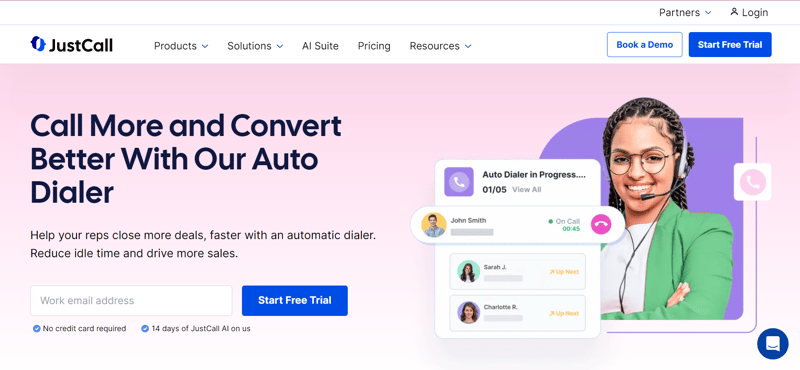
JustCall is a cloud-based phone system designed to enable its customers to make, receive, and monitor phone calls. They offer businesses the chance to get phone numbers in 58 countries. The system is most often used by mid-sized companies.
The system offers its customers:
- Automatic call logging
- Native CRM integrations
- Virtual call center
- Sales dialers
The company offers potential customers three pricing plans.
|
Plan Type |
Pricing |
|
Team |
$29/month per user (billed annually) |
|
Pro |
$49/month per user (billed annually) |
|
Pro Plus |
$89/month per user (billed annually) |
You can check out their pricing plan in more detail here.
3. Connex One
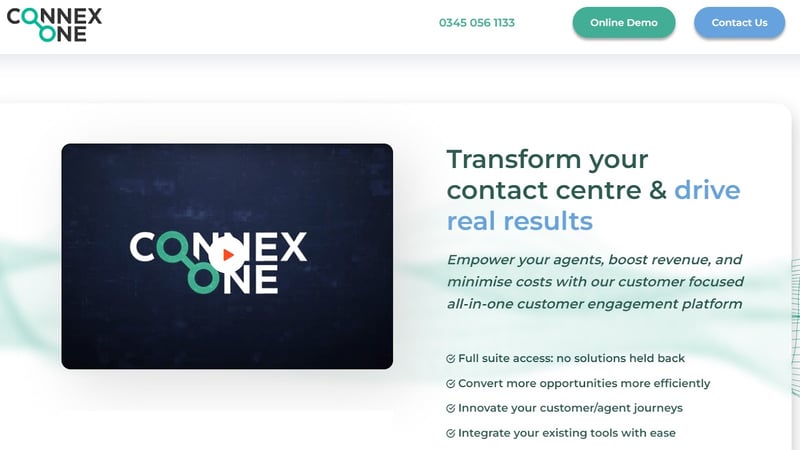
Connex One is a customer engagement platform that helps companies engage with their customers through a cloud-based omnichannel engine. They aim to provide companies with the tools needed to consolidate the customer journey on a single platform.
These features include:
- AI automation
- Enhanced data insights
- Next-generation dialler
- Workflow optimization
In an attempt to offer full transparency, Connext One does not offer pricing plans but tailors the cost of its platform to each customer to ensure a great level of flexibility and customization.
Conclusion
There is no denying the role predictive dialers can play in increasing agent productivity at call centers.
There is also no denying the other benefits:
- Increase sales
- Lower call center costs
- Better oversight
- Stronger lead management
But you cannot ignore the risks of customers receiving blank calls, or the fact that predictive dialers work best for call centers with at least eight agents who are more interested in the number of calls than they are in offering each prospect the best possible customer experience.
So, depending on your company's specific needs, you will have to decide which downsides you can live with and which ones are unacceptable. And if you wish to make an even more informed decision, we invite you to educate yourself further about the differences between various types of dialing software by visiting our call center solutions page and booking a demo today!

Skyrocket your sales with the CRM that does it all.
Calling? Check. SMS? Check. Automation and AI? Check. Effortlessly keep in touch with your customers and boost your revenue without limits.

Take your sales to new heights with Ringy.
Sales in a slump? Ringy gives you the tools and flexibility you need to capture leads, engage with them, and turn them into customers.
Subscribe to Our Blog
Enter your email to get the latest updates sent straight to your inbox!
Categories
Related Articles




























